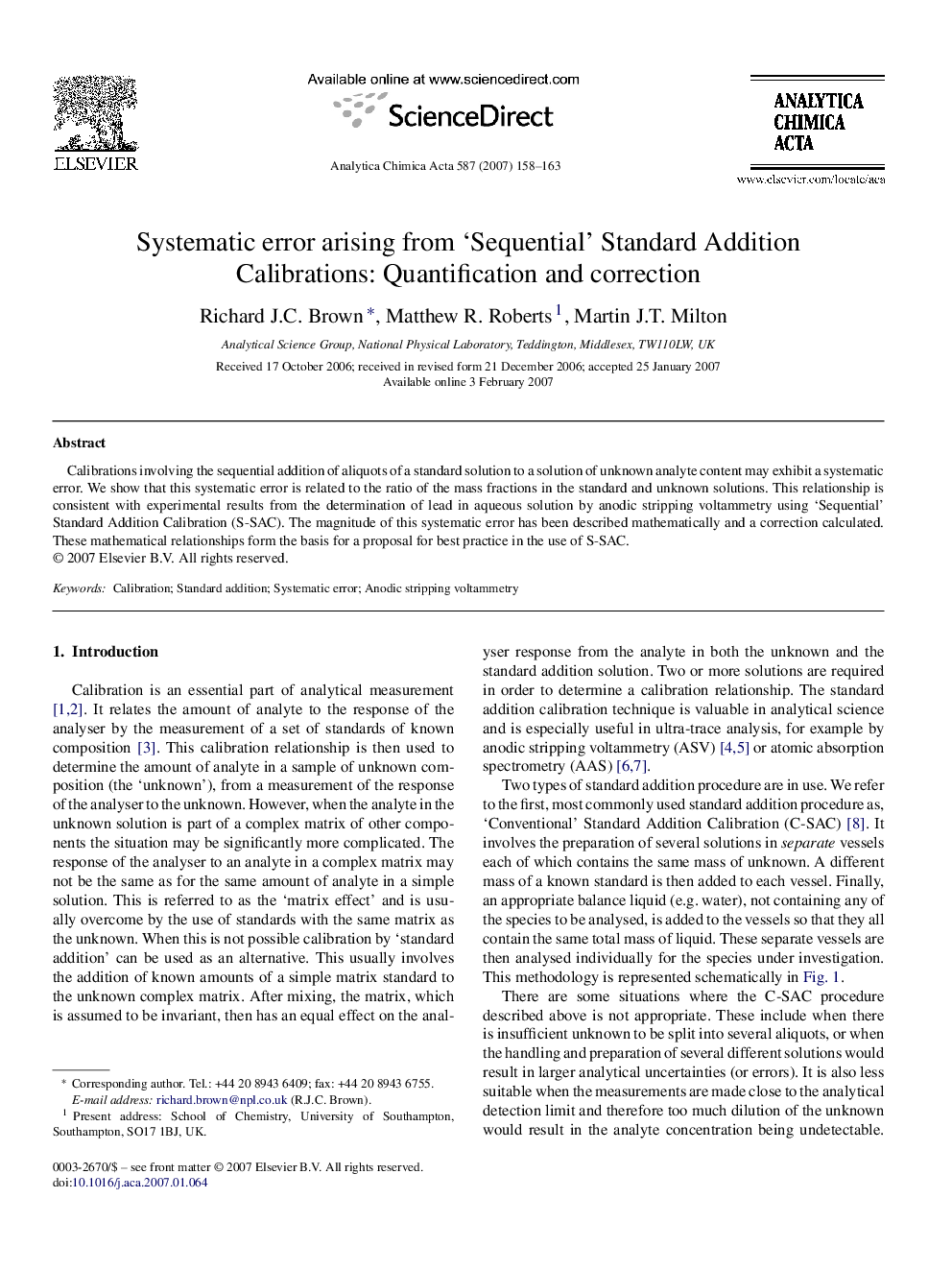| Article ID | Journal | Published Year | Pages | File Type |
|---|---|---|---|---|
| 1171057 | Analytica Chimica Acta | 2007 | 6 Pages |
Abstract
Calibrations involving the sequential addition of aliquots of a standard solution to a solution of unknown analyte content may exhibit a systematic error. We show that this systematic error is related to the ratio of the mass fractions in the standard and unknown solutions. This relationship is consistent with experimental results from the determination of lead in aqueous solution by anodic stripping voltammetry using ‘Sequential’ Standard Addition Calibration (S-SAC). The magnitude of this systematic error has been described mathematically and a correction calculated. These mathematical relationships form the basis for a proposal for best practice in the use of S-SAC.
Related Topics
Physical Sciences and Engineering
Chemistry
Analytical Chemistry
Authors
Richard J.C. Brown, Matthew R. Roberts, Martin J.T. Milton,
